This article was co-authored by Robin Abellar. Robin Abellar is an ACE Certified Personal Trainer, 200hr Certified Yoga instructor, Certified POP Pilates instructor, Barre instructor, and Certified Running Coach based in California. Abellar specializes in yoga, weight loss, and toning and provides digital coaching via her personal fitness consulting business, Healthfully Lean.
There are 11 references cited in this article, which can be found at the bottom of the page.
This article has been viewed 85,406 times.
When it comes to getting stronger, weight/resistance training is by far the most effective means. Starting a weight training regimen will allow you to gradually increase your strength over time. However, care must be taken to ensure steady achievement as well as your own personal safety. Learn how to exercise like a pro and support your efforts with lifestyle changes to start getting stronger today.
Steps
Weight Training for Strength
-
1Plan a strength-building program. To build strength, nearly all fitness resources will recommend some form of resistance or "weight" training. These are exercises that involve pushing, pulling, or lifting against some sort of resisting force, usually gravity. There are many different weight training exercises than can be helpful.[1] Here are a few, listed below:
- "Free-weight" exercises like the Bench Press, Shoulder Press, Deadlifts, Squats, and Barbell curls are excellent exercises to increase strength and muscular density. "Machine" versions of these exercises also work, but won't train your balance and form as well.[2]
- Bodyweight exercises are also a great way of improving strength, and it's usually the best place to start a new workout. Hold off on the machines until you master bodyweight exercises. You can do exercises like push ups, pull-ups, chin-ups, sit-ups and bodyweight dips to increase strength in the upper body and core. Prisoner squats and lunges can increase leg strength.[3]
-
2Start slowly. Ease your way into a weight training regimen. According to strength coach Dan Trink, C.S.C.S., as a beginner you should start with lighter weights and be able to do two to three sets of 10 to 12 repetitions (that is, a complete motion of the exercise), leaving two to five reps “in the tank.” At this early stage you shouldn't push yourself too hard, but accustom your mind and body to the movements.
- You will see results with even modest amounts of exercise. Two to four workouts of 30 minutes per week is enough to get good strength gains.
- Give yourself one to two minutes between sets to recover. But don't wait too long, or you will not make the most of your routine.
Advertisement -
3Use proper form. Always do weightlifting exercises the way they were meant to be done. This is essential for strength and safety. A good general policy is to work on form at first, using "easy" levels of weight. Only increase the weight when you have your form down. Don't ever jerk, bend your back, or otherwise break your form to complete a rep. This is a good way to injure yourself, killing your strength gains.[4]
- If you can, workout across from a mirror. This isn't vanity — you can use the mirror to make sure you are using proper form.
- Don't be tempted to hold your breath while lifting — make sure to breathe out as you lift the weight and to breathe in as you lower it. Holding your breath can cause fatigue, dizziness, and elevated blood pressure that can make you faint.
- If an exercise is too difficult to do with proper form, see if you can perform an easier version of the same exercise. For example, if you can't do a pull-up, use a chair or partner to support your legs.
- If just getting started, work with a physical therapist or trainer to help develop proper technique.
-
4Stop short of the "point of failure.” Weightlifting for strength (as opposed to muscle mass or appearance) usually involves coming close to the "point of failure." This is when you can't do an exercise anymore with proper form. For example, if you are doing simple arm curls (i.e. pulling the dumbbell up towards your shoulder), the point of failure is when you can't do one more curl. Although some weightlifters recommend that you always aim for the point of failure, others argue that this puts excess stress on the central nervous system and also requires longer short term and long term recovery times. Instead, they recommend you aim for one or two reps short of failure.[5]
-
5Choose between muscle size and muscle tone. Consistent weight training with good form will increase your strength over time. However, your exact results can vary depending on how you approach your exercises. There are two main choices:[6]
- Training with higher weights and lower reps will increase your strength as well as muscle size. This is how Olympic lifters get massive, powerful muscles.
- Training with lower weight and higher reps will increase your strength and endurance and while toning the muscle. In other words, your muscles may not get huge, but they will get stronger, harder, and more defined.
-
6Ramp up your workout over time. You should see great progress in the first two months or so. Resist the urge to skip ahead and stick with your program. After about eight weeks, however, you will start to reach a point of diminishing returns and need to add more weight. In this next phase of training, you should aim to perform fewer reps and more sets – Trink says that three to four sets of eight to ten reps for each exercise is a good goal. Every week, subtract reps and add sets, leaving about one rep “in the tank.” You will have to update your routine in order to make steady gains. If you reach a plateau, it's time to add more weight and reduce sets.
- This bears repeating: slow, steady improvements are the way to get stronger. Attempting really difficult exercises too quickly can leave you injured. Also make sure to maintain good form.
-
7Exercise safely. Working with heavy weights is a great way to build your strength, but it can also be dangerous if attempted carelessly. Many exercises put great stress on joints – full squats, for example, can be hard on the knees while certain barbell exercises stress the back. Do not attempt a new exercise without learning the proper form so that you . The supervision of a trainer can help here. And never attempt the point of failure on a bench press without a "spotter." This is a person that can grab the barbell before it falls on you if you misjudge how much you can still lift.[7]
Making Lifestyle Changes
-
1Eat a healthy diet with protein. The old saying "you are what you eat" is especially important when it comes to building strength. A strength-building diet includes lots of lean proteins like fish, chicken, and leaner cuts of beef and pork, which help build muscle. Whole-wheat carbs (like bread, rice, and pasta) are a good source of energy, but don't load up on them. Healthy vegetables like broccoli, spinach, and other greens contain lots of nutrients, while fruits are great for dessert and quick boosts of energy. Avoid junk food — it will only hold you back.[8]
- You will need protein, but not too much. The human body can only process a limited amount of protein at each meal. Aim for about .7 to .8 grams of protein per pound of bodyweight each day. Anything more will be stored as body fat.[9]
-
2Eat a calorie surplus each day. To gain strength and muscle mass, you will need to consume enough calories to fuel your workouts; you will also need to consume a net calorie surplus so that your body can rebuild itself. This doesn't have to be a big surplus: 300 – 500 calories above what you normally eat is fine. While lifting, a weight gain of .5 to 1 pound per week is normal. Eat frequently, as well, as often as every three hours. Your meal plan should include breakfast, lunch, dinner, and several sizeable snacks.[10]
- Each meal should contain some kind of protein like eggs, lean cuts of meat or fish, edamame, rice and beans, lentils. Try to avoid processed meats like bacon, hot dogs, or lunch meats.
-
3Balance your workouts with rest. When you work out, your muscles' microscopic fibers are broken down. It takes time for your body to rebuild them stronger than before. Aim to work out about three to four times a week if you're a beginner, leaving a few days of rest. Hit different muscle groups every day so that each muscle group can rest. A good night's sleep (seven to nine hours for most people) is also essential for making strength gains, so make sure you're always in bed at a reasonable time.[11]
- Consider training in the morning when your energy level is at its highest. You can even do it before breakfast.
- If you train in the afternoon, make sure to fuel properly throughout the day with a healthy protein/carb lunch.
-
4Consider cardio for endurance. Cardio exercises won't make your muscles stronger, but they will make it so that you can exert yourself for longer. They're also great for weight loss as long as you don't eat more to compensate for the calories burnt. It's up to you to decide how to divide your time — while most power lifters don't spend lots of time on cardio, working a little into your workout will never hurt you.
- Cardio is an excellent way to warm up before strength training.
- See our cardio articles for lots of great exercises.
-
5Don't overtrain. In addition to resting, make sure that you aren't working out too often. Taking on too much can put you at risk of fatigue or injury, and can actually reverse the gains that you've made. If you feel pain during an exercise, stop. Give yourself one or two days' rest or reduce the weight before trying again.[12]
-
6Be patient and consistent when it comes to fitness goals. Having a great workout one day and never doing it again will not make you stronger. You can only gain strength with hard work over time. Stick with your workout plan — in a few months, your results will speak for themselves.
Community Q&A
-
QuestionI am a 12 year old girl. How long will it take for me to become stronger?
 Community AnswerAbout six weeks of consistent exercise will make you noticeably stronger.
Community AnswerAbout six weeks of consistent exercise will make you noticeably stronger. -
QuestionWhat if I'm a kid and I can't do most of this stuff?
 Community AnswerIf you're a kid, you can still run, do toe-touches, squats, push-ups, sit-ups, and jumping jacks. These are all safe exercises that will make you stronger.
Community AnswerIf you're a kid, you can still run, do toe-touches, squats, push-ups, sit-ups, and jumping jacks. These are all safe exercises that will make you stronger. -
QuestionI'm super skinny, will my arms get bigger?
 Tom De BackerTop AnswererYour arms will get bigger the more you use them. Do lots of pull-ups, look up variations on the pull-up to keep things interesting. One rule of thumb is if you do reps fast you build muscle strength, if you do them slowly you build both strength and mass. But that doesn't work for everyone all the time. You could consider getting a PT to work with you specifically. But none of it will work if you don't also eat well, drink lots of water and most of all sleep well.
Tom De BackerTop AnswererYour arms will get bigger the more you use them. Do lots of pull-ups, look up variations on the pull-up to keep things interesting. One rule of thumb is if you do reps fast you build muscle strength, if you do them slowly you build both strength and mass. But that doesn't work for everyone all the time. You could consider getting a PT to work with you specifically. But none of it will work if you don't also eat well, drink lots of water and most of all sleep well.
References
- ↑ http://www.weight-training-exercises.com/
- ↑ http://www.dumbbell-exercises.com/
- ↑ http://greatist.com/fitness/50-bodyweight-exercises-you-can-do-anywhere
- ↑ http://www.mayoclinic.org/healthy-lifestyle/fitness/in-depth/weight-training/art-20045842
- ↑ http://www.weightrainer.net/training/failure.html
- ↑ http://www.mensfitness.com/training/your-ideal-rep-range
- ↑ http://weighttraining.about.com/od/techniquesandstrategies/a/safelifts_2.htm
- ↑ http://www.mensfitness.com/nutrition/what-to-eat/top-10-muscle-building-foods
- ↑ http://www.mensfitness.com/nutrition/what-to-eat/protein-guide-maximum-muscle
About This Article
To get stronger, start a resistance or weight training regime with exercises like bench presses and shoulder presses, or bodyweight exercises like push ups. In the beginning, train with less weight so you are able to perform 2-3 sets of 10-12 reps. While exercising, make sure you keep proper form by working out in front of a mirror. After about eight weeks, increase the weight you train with, but do so gradually to avoid injury. To get the best out of your training, eat a healthy diet, including proteins and a calorie surplus each day, and ensure you rest between each workout. To learn more from our Personal Trainer co-author, such as how to incorporate cardio into your routine, keep reading!

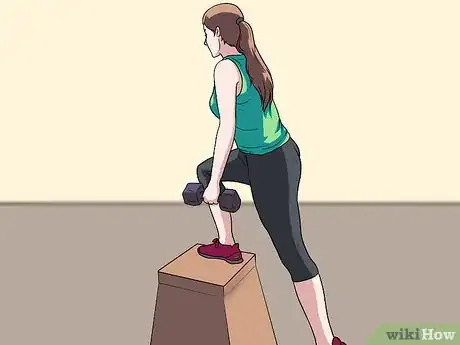
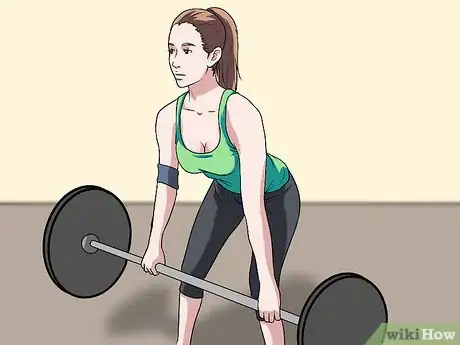
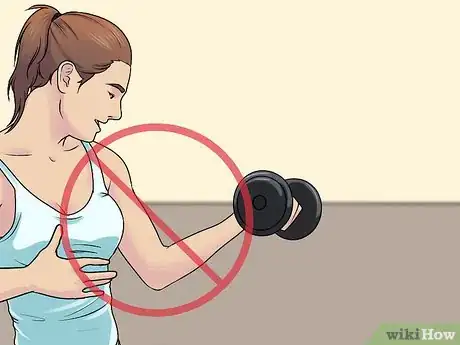
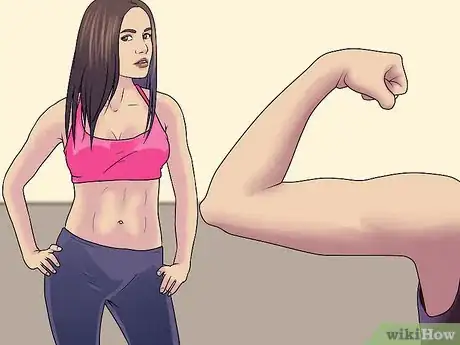
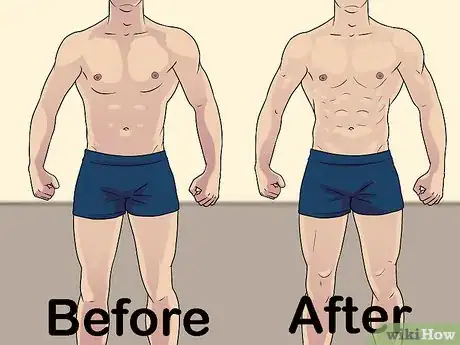
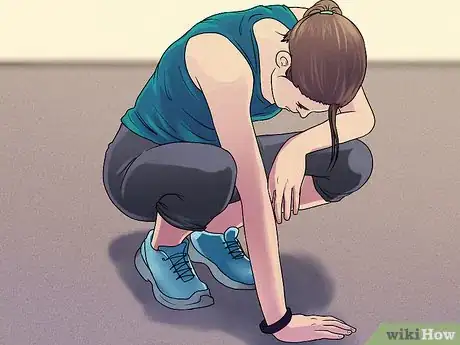






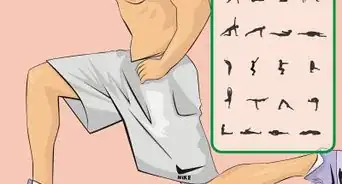




-Step-24.webp)

















































